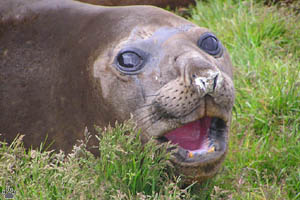
Southern elephant seals (Mirounga leonina), Grytviken,
South Georgia.
Part 7: The Antarctic
The Antarctic is one of the best places to see wildlife, especially
marine mammals and seabirds. Unfortunately, it is also very expensive to get to.
 |
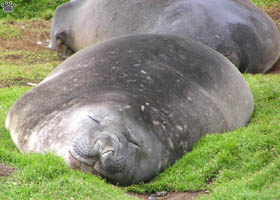 |
| Southern elephant seals, Grytviken,
South Georgia. |
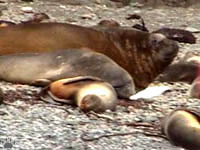
Southern elephant seals,
Gold Harbour, South Georgia. |
South Georgia
is the most scenic of the Subantarctic islands, and it has the largest numbers
of wildlife. In summer, 300,000 Southern elephant seals and two million Antarctic
fur seals (Arctocephalus gazella) gather here. |
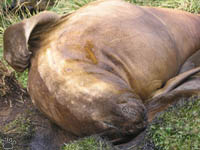
Southern elephant seal,
Grytviken, South Georgia. |
 |
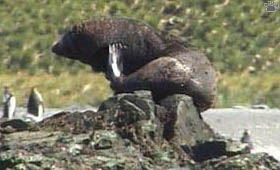 |
| Antarctic fur seals, Grytviken,
South Georgia. |
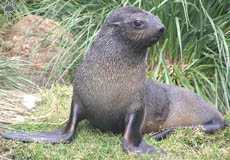 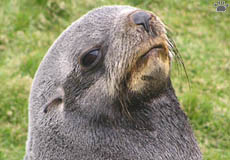
Antarctic fur seals, Grytviken, South Georgia. |
The Antarctic fur seals were once
thought to be extinct, following two centuries of slaughter. But they managed
to survive on small inaccessible islets, and have repopulated most islands between
50 and 65 degrees s. lat. |
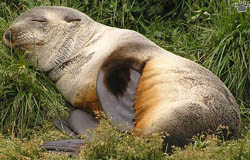 
Fur seals sleeping in tussock grass, Grytviken. |
 |
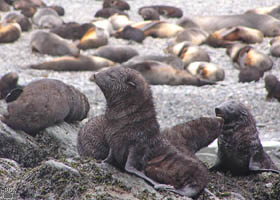 |
| Baby Antarctic fur seals, Elsehul,
South Georgia. |
 
Swimming fur seals, Gold Harbour. |
On South Georgia, fur seals prefer
protected beaches and slopes covered with tussock grass (Parodiochloa flabellata).
They are so numerous that some birds depending on tussocks for nesting have suffered
noticeable habitat loss. Subantarctic fur seal (A. tropicalis, below) is
very rare on South Georgia. Weddell (Leptonychotes weddelli) and leopard
(Hydrurga leptonyx) seals also occur here in low numbers. |
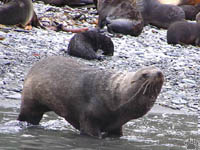 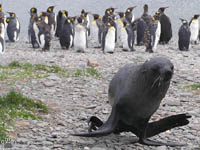
Charging fur seals, Grytviken. |
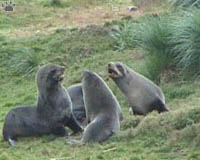
Playing young male Antarctic fur seals,
Grytviken, South Georgia. |

Adult male Antarctic fur seal,
Elsehul, South Georgia. |
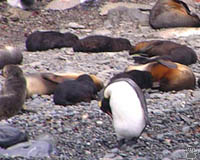
Subantarctic fur seals are very bright-colored.
Elsehul. |
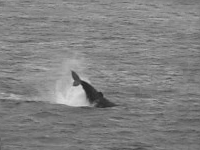
Humpback whale (Megaptera novaeangliae),
off South Georgia. |
Whales are abundant in summer around
South Georgia, as well as along the coasts further south, all the way to the edge
of pack ice and sometimes even further. As usual, humpbacks are the most fun to
watch. |
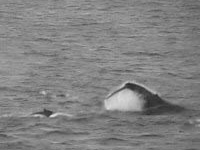
Humpback whale lobtailing,
off South Georgia. |

Sei whale (Balaenoptera borealis),
off
Elephant Island, South Shetland Islands. |
Antarctic minke is the most numerous
species. Fin (B. physalis) and blue (B. musculus) whales also make
it all the way south. Sei whales occur no further than South Shetland Is, where
all four can be seen together. |
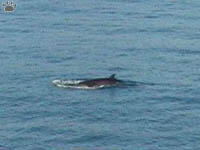
Antarctic minke whale (B. bonairensis), off Coronation
Island, South Orkney Islands. |
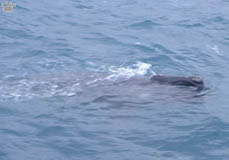 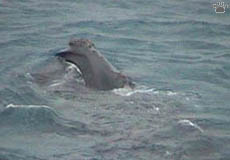
Southern right whales, off South Georgia. |
In January, 2005 we were surprised
to see large numbers of Southern right whales (Eubalaena australis) along
the northern coast of South Georgia. This species has been very rare in the area
since the 1850-s, but is now making a slow comeback. |
 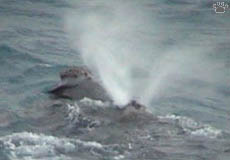
Southern right whales, off South Georgia. |
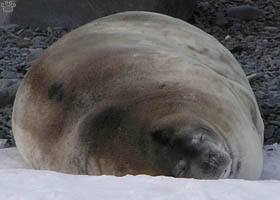 |
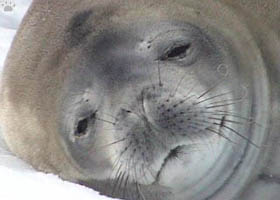 |
| Weddell seals, Hope Bay, Antarctic
Peninsula. |
 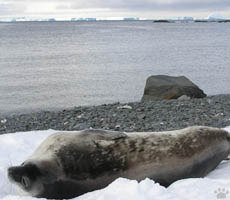
Weddell seals, Hope Bay, Antarctic Peninsula. |
Weddell seal is the seal species
most often seen by tourists around the Antarctic continent. It is mostly a coastal
species, and occurs further south than any other mammal. It is capable of deep
dives, and can chew its way through thick ice if necessary. Usually it is very
easy to approach. |
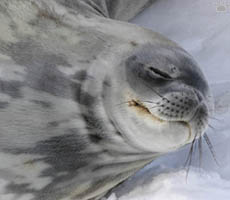 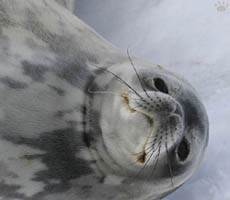
Weddell seals, Hope Bay, Antarctic Peninsula. |
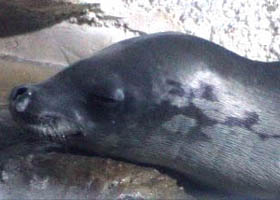 |
 |
| Crabeater seal (Lobodon carcinophagus),
Hope Bay, Antarctic Peninsula. |
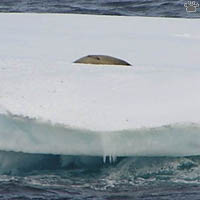
Crabeater seal, Bransfield Strait, off
Antarctic Peninsula. |
Crabeater seal is the most numerous
mammal in the Antarctic, but it prefers pack ice. Ross' seal (Ommatophoca rossi)
sticks to even heavier ice, and is rarely seen. Leopard seal, a common sight in
the vicinity of penguin colonies, feeds mostly on kryll, but don't get too close.
|

Leopard seal, Hope Bay,
Antarctic Peninsula. |
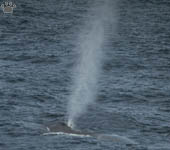
Blue whale, off Elephant I, S. Shetland Is.
Part 8: Florida
Back to Part 6
Home
|